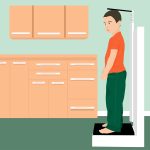Winter health hazards at home
Winter injuries and risks
Winter products such as hot water bottles, electric blankets and heaters can cause burns and other injuries.
Other winter risks come from faulty electrical products that can overheat, give you an electric shock or could potentially cause a fire.
Fire safety
About half of all fires in the home start in the kitchen, and more than 4 in 10 of all deaths from fire happen during winter.
It is essential to install smoke alarms throughout your home and test them every month. Change the batteries every year, perhaps on a memorable date such as a birthday.
Where possible, make sure you and your family know more than one safe way out of every room in your home. You can write down an escape plan in case you have a fire in the home and practise it regularly.
Make sure children know that if their clothes catch fire, they mustn’t run away — this only makes the fire burn hotter and faster. Instead, tell them to:
- STOP immediately where they are.
- DROP quickly to the ground and cover their face with their hands.
- ROLL over and over to put out the flames.
Every state and territory fire authority has resources to help children understand what to do in the case of a fire, such as easy-to-remember advice like “get down low and go, go, go!”.
Here are a few tips to keep you and your home fire-safe:
- Keep curtains, tablecloths and bedding away from portable heaters.
- Keep wet clothes at least 1m from heaters or fireplaces, and never place clothes or towels on your heater.
- Clean the lint filter every time you use a clothes dryer since lint that has built up can catch fire.
- Never use your gas oven or stove as a room heater.
- Use just 1 appliance per power point and switch them off when you’re not using them. Heaters consume a lot of power and may overload the supply, which can cause a fire.
- Never leave burning candles or any open flame unattended.
- Store matches and lighters in a safe place, out of reach of young children.
- Always keep children away from open heat sources such as fireplaces and gas stoves, and remember that even clothing with a ‘low fire danger’ label can still catch fire.
Every state and territory fire authority has resources to help children understand what to do in the case of a fire, such as easy-to-remember advice like “get down low and go, go, go!”.
Fireplaces
If you have a fireplace in your home, make sure the chimney is clean and not blocked. Always place a screen in front of a fireplace when it’s being used, and never burn rubbish such as plastics or foam, wood that is painted or treated with copper chrome arsenate (CCA) or creosote-treated timber (such as railway sleepers).
Heaters
No matter what type of heater you have, you should check every winter that it is safe to use.
Gas heaters
Gas heaters produce heat when they burn gas fuel. A flued gas heater releases air pollutants and water vapour outside the home through a chimney or flue, while an unflued gas heater releases them directly into the home.
- If your gas heater doesn’t have a flue, service it regularly and make sure the room is well ventilated.
- Never use an unflued gas heater in a bedroom, bathroom or other small rooms with no permanent ventilation because harmful toxic gases can build up inside.
- Always check your gas heater is working correctly. It should be serviced every 2 years by a licensed gas fitter. Signs that something is wrong include difficulty lighting it, yellow flames, unusual smells or noisy or inoperable fans.
Electric heaters
- Electric heaters should be checked for obvious damage such as rusted reflectors (especially on older heaters). The power cord should also be checked for any damage. An electrician or service technician should do any repairs.
Don’t leave portable heaters in places where people or pets could knock them over.
Portable outdoor gas heaters
Never use a gas heater designed or marketed for outdoor use inside your home.
Portable outdoor gas heaters can cause fires if they are incorrectly stored, not properly maintained and placed too close to overhead coverings, such as awnings, or to other flammable materials.
Outdoor heaters need regular safety checks and should be serviced every 2 years. Warning signs that a heater is not working well include gas flames and radiant panels that burn yellow or produce soot.
If you detect a gas leak from your portable outdoor gas heater, turn it off at the cylinder if safe to do so and call your local fire station.
Electric blankets
Check your electric blanket is in good condition and hasn’t been placed on a recall list by checking the Recalls Australia website. Faulty electric blankets can overheat, cause an electric shock, spark and potentially cause a fire.
You should always roll your blanket up to store it because folding it can damage element wires inside the blanket. When you take it out of storage and use it for the first time, lay it flat on the bed and check for hot spots as it heats up.
Hot water bottles
Use warm, but not boiling, water to fill your hot water bottle and examine it for leaks before you use it. Replace it as soon as it starts to look cracked or worn or every 2 years. Remember that the rubber can perish from the inside so you may not be able to see if it’s worn out.
Hot water bottles can cause burns if you place them directly on your skin so make sure they are wrapped in a towel or fabric cover.
Heat packs
Heat packs are usually fabric bags filled with wheat or some other grain that are heated in a microwave before they are used to warm parts of the body. Caution is needed when using heat packs as they can cause burns or fires related to:
- being heated and placed on or in bedding
- being heated in the microwave for longer than the time specified by the manufacturer
- being reheated before they have cooled properly
- being old and so the filling has dried out and become combustible
First aid for burns
Burns can be caused by heat, cold, electricity, chemicals, gases, friction and radiation (including sunlight). The aim of first aid for burns is to stop the burning process, cool the burn (for pain relief) and cover the burn.
Immediate first aid steps
- Immediately cool the burn with running water for at least 20 minutes.
- Remove constrictive clothing and objects such as rings, watches or other jewellery not stuck to the skin.
- Cover the burnt area with a light, loose nonstick dressing. Use clean, dry, non-fluffy material such as plastic cling film
- If possible, elevate the burnt limb to minimise swelling.
- Keep the person covered where possible so they don’t get cold.
- Call for help.
Call an ambulance or go straight to your nearest emergency department if:
- the burn is deep, even if the patient does not feel any pain
- the burn is larger than a 20 cent piece
- the burn involves the airway, face, hands or genitals
- the skin looks leathery
- there are patches of brown, black or white
- the burn was caused by chemicals or electricity
- the patient is having trouble breathing



